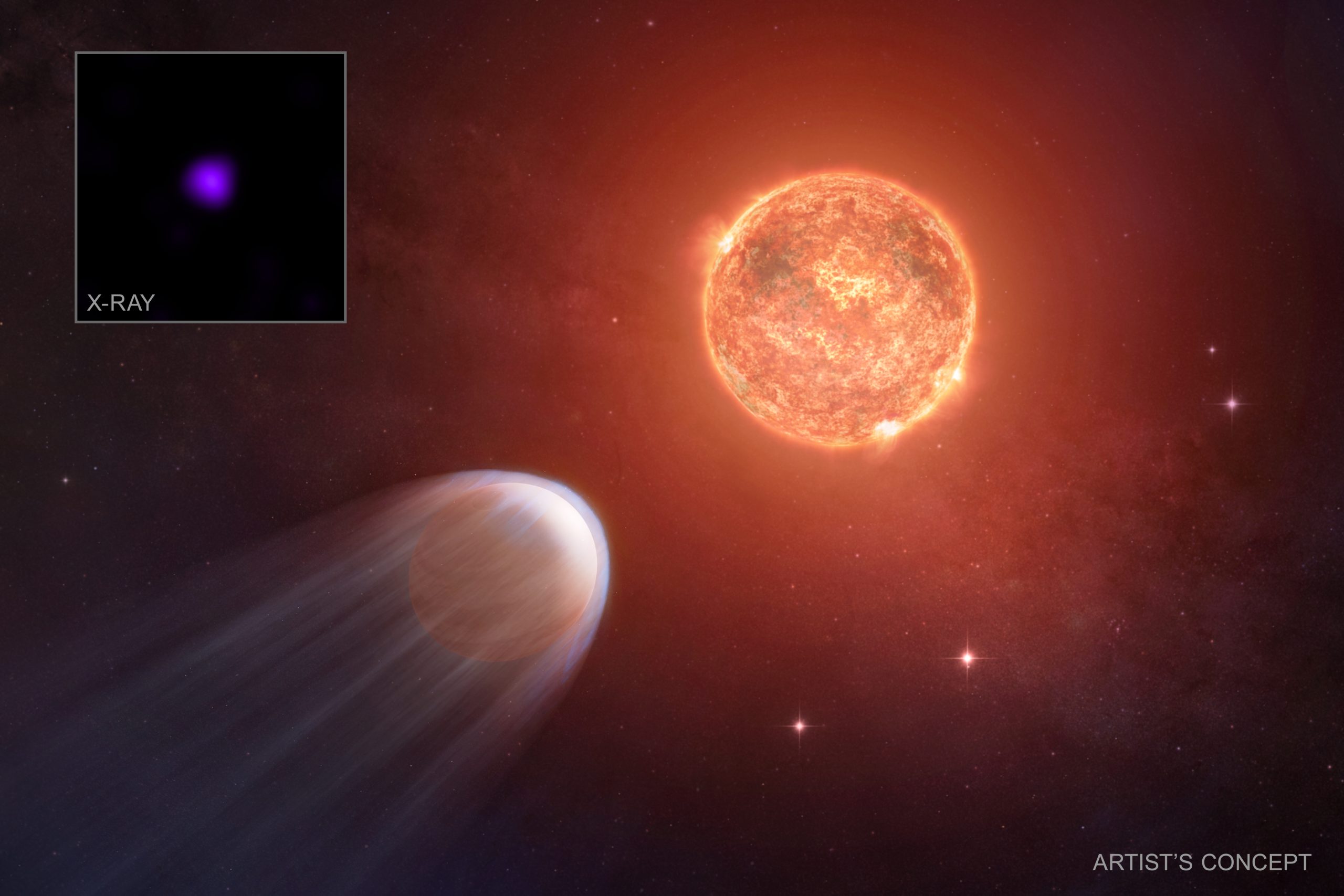Now Reading: NASA’s Chandra Discovers Shrinking Baby Exoplanet
-
01
NASA’s Chandra Discovers Shrinking Baby Exoplanet
NASA’s Chandra Discovers Shrinking Baby Exoplanet

Rapid Summary
- NASA’s Chandra X-ray Observatory revealed the transformation of exoplanet TOI 1227 b from a Jupiter-sized planet with a thick atmosphere to a smaller, barren world.
- TOI 1227 b, aged only 8 million years, orbits close to its host star (TOI 1227), which is about one-tenth the mass of the Sun and emits intense X-rays.
- High-energy X-ray radiation from the star is causing rapid atmospheric loss on the planet-roughly equivalent to Earth’s entire atmosphere every 200 years.
- estimates suggest that in about a billion years, TOI 1227 b will lose more than two Earth masses worth of atmosphere and shrink substantially in size.
- The strong X-rays have inflated its current size (comparable to Jupiter), while future mass loss will reduce it to a barren world outside any ‘habitable zone.’
- Researchers used stellar motion and brightness comparisons with theoretical models to determine both planetary age and atmospheric dynamics.
- A preprint detailing this study has been accepted for publication in The Astrophysical Journal.
Indian Opinion Analysis
NASA’s discovery of TOI 1227 b builds on significant advancements in understanding young exoplanets heavily influenced by their host stars. While distant research may seem disconnected from immediate concerns within India, these findings demonstrate how foundational scientific projects effect broader fields such as studying atmospheric conditions relevant for Earth’s satellites or even localized climate modeling strategies.
India’s long-term ambitions in space exploration-exemplified by missions like Chandrayaan-stand reinforced by contributions like these that deepen planetary science globally.Collaborations between ISRO and international agencies similar to NASA can lead innovations towards addressing practical challenges tied directly back into India’s environment or science education circuits focusing astronomy bridging into advanced physics.
Learn More: https://www.nasa.gov/image-article/nasas-chandra-finds-baby-exoplanet-is-shrinking/

























